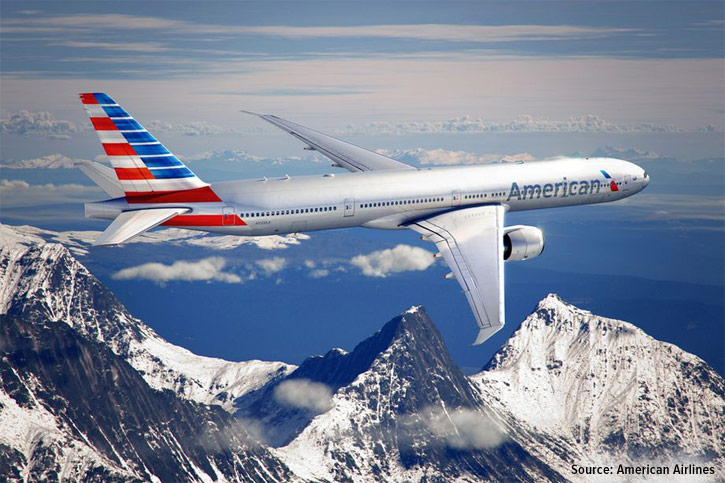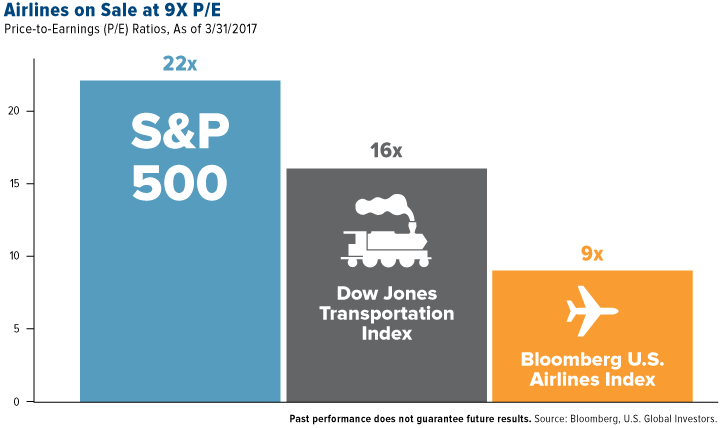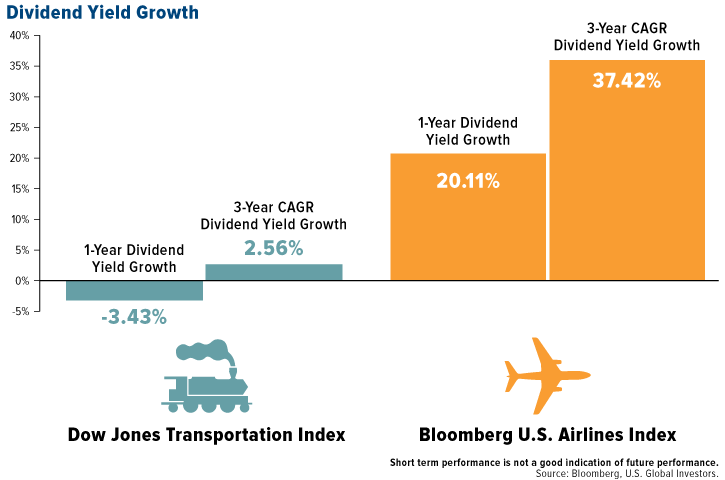In the first six months of 2017, North American airlines as a whole delivered higher profits than any other region. Net post-tax profits stood at $15.4 billion, or $16.32 per passenger, according to the International Air Transport Association (IATA). The Asia-Pacific region came in second, with profits at $7.4 billion, or $4.96 per passenger.

“North American airlines are the powerhouse of industry profitability, generating about half of the collective global profit,” the IATA writes.
By the end of 2017, roughly 1 percent of world gross domestic product (GDP), or $776 billion, will be spent on air transport, the airline trade group estimates.
The long-term outlook for domestic demand looks just as optimistic, says the Federal Aviation Administration (FAA). In its most recent forecast, the agency sees system traffic in revenue passenger miles (RPMs) increasing 2.4 percent annually between 2017 and 2037.
Estimated 234 Million People Flying on U.S. Carriers this Summer
Thanks to a steadily improving economy, rising GDP, strong consumer confidence and affordable airfare and fuel costs, more people than ever before are expected to fly on U.S. airlines this summer.
Airlines for America (A4A) projects a record 234.1 million people flying worldwide on U.S. carriers between June 1 and August 31. That figure’s up a healthy 4 percent from last summer. American Airlines reported that June RPMs hit a new all-time high for the month, reaching 21 billion, up 0.8 percent from June 2016.
The surge in air travel demand is a reflection of an improving domestic economy. Consumers are happy to spend their money right now, with the Consumer Confidence Index posting a 16-year high of 121.1 in July.
Customer Satisfaction at All-Time High
Glowing customer satisfaction is another contributing factor to increased demand. The J.D. Power 2017 North America Airline Satisfaction Study found that passengers are more satisfied with their service than at any other time in the study’s 10-year history. Despite the regretful United Airlines incident in April, when a man was dragged from a Chicago flight bound for Louisville, overall satisfaction rose for a fifth consecutive year, reaching its highest level ever.
In response to the incident in April, United officially ended its policy of allowing employees to take the seats of already-boarded passengers of oversold flights, and it announced that it was raising the maximum incentive for passengers to skip such a flight to $10,000.
Airlines Offer Attractive Deals for Investors
Many U.S. stock investors might be discouraged by historically high valuations, but the airlines industry continues to offer some attractive deals. Airlines, as measured by the Bloomberg U.S. Airlines Index, had a reasonable price-to-earnings (P/E) ratio of 9 as of March 31, 2017. That’s less expensive than the broader Dow Jones Transportation Index (16 times earnings) and far more reasonable than the S&P 500 Index, which was trading at 22 times earnings at the end of March.

Dividend yields also attracted new and returning investors to the industry. The airline index yields grew 20.11 percent for the one-year period as of March 31, compared to a 3.43 percent decline for the transportation index.

Interested in investing in the airlines industry?
Explore the U.S. Global Jets ETF (JETS) today!
Past performance does not guarantee future results.
The S&P 500 Index is a widely recognized capitalization-weighted index of 500 common stock prices in U.S. companies.
The Dow Jones Transportation Average (DJTA, also called the “Dow Jones Transports”) is a U.S. stock market index from S&P Dow Jones Indices of the transportation sector, and is the most widely recognized gauge of the American transportation sector. The Bloomberg U.S. Airlines Index is a capitalization-weighted index comprised of the airlines in the Americas that have a market capitalization greater than $250 million. IPOs that meet the minimum market capitalization are included in the index after the first day of trading.
Administered by the Conference Board, the Consumer Confidence Index (CCI) measures how optimistic or pessimistic consumers are with respect to the economy in the near future. The idea behind the Index is that if consumers are optimistic, they tend to purchase more goods and services. It is not possible to invest directly in an index.
The J.D. Power 2017 North America Airline Satisfaction Study measures passenger satisfaction among both business and leisure travelers, and is based on responses from 11,015 passengers who flew on a major North American airline between March 2016 and March 2017. The study was fielded between April 2016 and March 2017.
Dividend growth rate is the annualized percentage rate of growth that a particular stock’s dividend undergoes over a period of time. There is no guarantee that the issuers of any securities will declare dividends in the future or that, if declared, will remain at current levels or increase over time. A dividend yield is a dividend expressed as a percentage of a current share price.
The price to earnings ratio (P/E ratio) is the measure of the share price relative to the annual net income earned by the firm per share. The P/E ratio shows current investor demand for a company share. A high P/E ratio generally indicates increased demand because investors anticipate earnings growth in the future.
The compound annual growth rate (CAGR) is the mean annual growth rate of an investment over a specified period of time longer than one year.
Revenue passenger miles (RPMs) and revenue passenger kilometers (RPKs) are measures of traffic for an airline flight, bus, or train calculated by multiplying the number of revenue-paying passengers aboard the vehicle by the distance traveled.
All opinions expressed and data provided are subject to change without notice. Opinions are not guaranteed and should not be considered investment advice.
